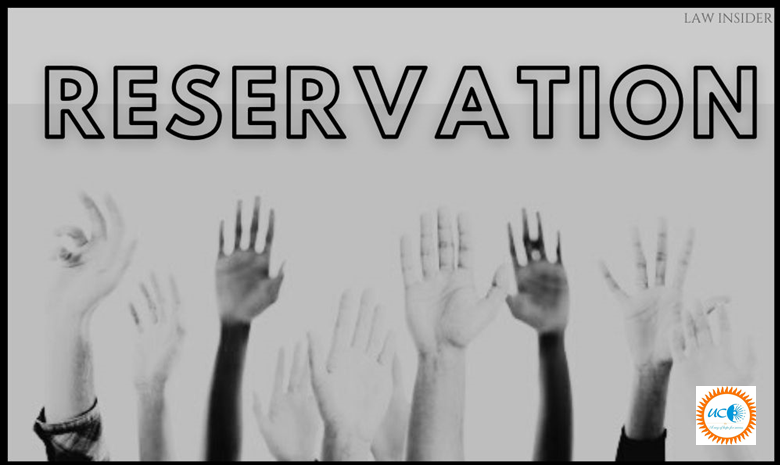The perils of undoing the framework of reservation
EWS- Economically Weaker Sections are eligible for the EWS quota i.e., 10% reservation announced by the Government of India.
- It was introduced under the 103rd Constitution (Amendment) Act, 2019 by amending Articles 15 and 16.
- It is inserted under Article 15 (6) and Article 16 (6).
Special measures:
- Article 15(6): Clause (6) of Article 15 of the Indian Constitution is related to economically weaker sections of the society. The Constitution (103rd Amendment) Act added it in 2019. This provision gives the State the authority to take specific measures for the welfare and advancement of the economically underprivileged groups in society.
- Article 16(6): As per it ,10% reservations (and not special measures) for EWS is provided in public employment.
Highlight of EWS Reservation Judgment by Supreme Court:
|
In favour of the 103rd Amendment Act
|
Against 103rd Amendment Act |
|
● Three Judges agreed that the amendment does not violate the basic structure of the Constitution, ● The new reservation is in furtherance of the Preamble’s goal of achieving justice — social, economic and political. ● EWS reservations are legitimate according to the Constitution’s preamble and Article 46. ● The government and its institutions are required by Article 46 to advance the educational and economic goals of Scheduled Castes, Scheduled Tribes, and other weaker groups. ● Treating EWS as a distinct class would be a fair classification, and doing so would go against the Constitution’s guarantee of equality. ● Reservation should not be allowed to develop into a vested interest because it is merely a means to an end. |
● Two judges dissented and observed that, while reservation on economic criteria is per se not violative of the Constitution, excluding SC/ST/OBC from the purview of EWS is violative of basic structure.
● They struck down Articles 15(6) and 16(6) for being discriminatory and violative of the equality code ● Allowing a 50% breach would lead to compartmentalization, and the right to equality would be replaced by the right to reservations. ● An economic quota is acceptable for gaining access to public resources, such as subsidies (Article 15), but it cannot be used in conjunction with reservations (Article 16), which aims to reflect the community. |
EWS Reservation Challenge to 103rd Constitution Amendment Act
- Violation of Basic structure: EWS reservation, which only reserved seats based on economic backwardness rather than social and educational backwardness, violated the Constitution’s fundamental principles.
- The term “basic structure” refers to the parts of the Constitution that are inherent and cannot be changed, not even by a constitutional amendment.
- Social upliftment: Reservations are not a tool for economic advancement; they are a way to make up for historical wrongs.
- Discriminatory: Due to the exclusion of people from socially and educationally disadvantaged classes, Scheduled Castes, Scheduled Tribes, and other groups, the EWS reservation was discriminatory.
- Breaches quota ceiling: Reservation violated the 1992 Indra Sawhney Case judgement by the Supreme Court, which stated that quotas could not exceed 50% of the total number of seats available.
Reasons of EWS Reservation:
- Rise of Inequality: Inequality has risen in India between 1990 and 2020, particularly in the early 2000s.
- The Gini index of wealth inequality: It has gone up from 62(zero point six two)in 1992, 0.63(zero point six three)in 2002 and 0.67(zero point six seven)in 2012 to 0.68(zero point six eight)in 2019.
- The average per capita of wealth among the upper castes: The upper castes own more than three times of Dalits and twice that of OBCs.
- They control about 45% of the total wealth in the country followed by OBCs(40%), Dalits 10% and Adivasis 5%.
- Control of wealth: About 55% wealth in the top quintile is controlled by the upper castes followed by 36% for OBCs, 5% for SCs and 3% for tribals.
- Historical and inherited: The source of the wealth gap is historical and inherited.
- land and buildings — are largely inherited.
- The land inequality is historical.
- World Inequality Report 2022: The ratio of private wealth to national income increased from 290% in 1980 to 555% in 2020(estimated to be the fastest increase in the world).
Way Forward
- In India, reservations have emerged as the sole tool for addressing caste-based inequity.
- Despite successes in expanding access to jobs, education, and higher wages, structural inequality was not addressed.
- The caste wealth gap is a result of inequality that is carried down from one generation to the next, not merely variations in education, employment, and income.
- Therefore, closing the gap won’t be achieved by improving education and employment opportunities alone.
- Undoing the existing framework of reservation: By substituting caste by economic criteria.
- It will not only reverse the modest gains made so far but also deepen structural inequality.
- Thomas Piketty: The history of the distribution of wealth has always been deeply political, and it cannot be reduced to purely economic mechanisms.
- A just society requires creating a level-playing field: altering the enduring legacy of inherited wealth and caste that block opportunities and life choices
- According to the UN Special Rapporteur on Extreme Poverty and Human Rights, it is crucial to recognise status-based horizontal inequalities since those who experience status-based discrimination are disproportionately represented among those who are poor.
- Besides the welfare schemes, India needs deft management of inflation and unemployment to serve the poor and the underprivileged sections of the society. Discuss.(UPSC 2022) (200 WORDS, 10 MARKS)




